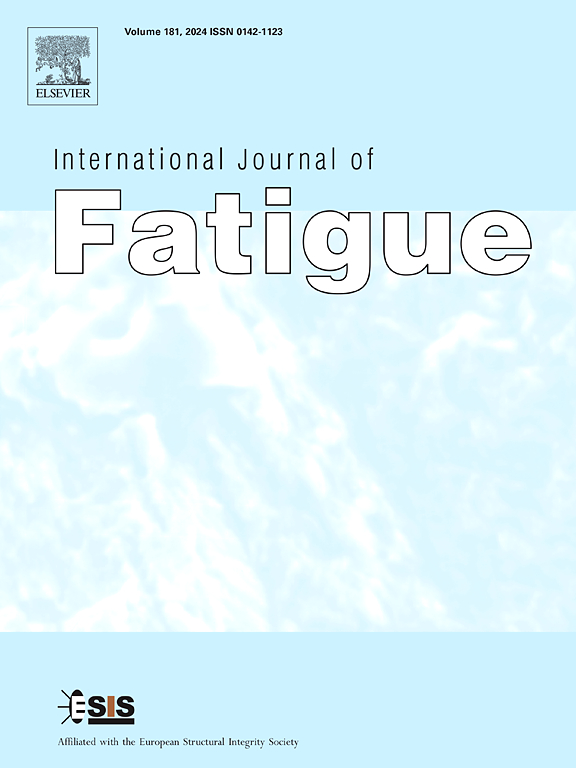压水堆环境和循环加载参数对316L不锈钢低周疲劳性能影响的显微组织研究
IF 5.7
2区 材料科学
Q1 ENGINEERING, MECHANICAL
引用次数: 0
摘要
奥氏体不锈钢通常用于轻水反应堆冷却剂环境,由于非单调负载条件,主要与负载跟随操作,热瞬态或间歇性工厂关闭和启动有关,因此容易受到环境辅助疲劳的影响。通过综合条纹间距评价和先进的微观表征,研究了含氢压水堆环境和循环加载参数对316L不锈钢低周疲劳行为的影响。压水堆环境导致316L奥氏体不锈钢LCF寿命降低,疲劳裂纹萌生增强,疲劳裂纹扩展速率加快。在压水堆环境中,氢与局部变形的相互作用导致疲劳裂纹扩展速率加快。通过对波形(周期性欠载、周期性过载和恒幅锯齿形波形)的影响评价表明,与CA载荷相比,PUL和POL均降低了低周疲劳寿命,加速了疲劳裂纹扩展速度,并提前了疲劳裂纹发生的周期。LCF波形强烈影响剪切带的形成、塑性变形的局部化和应力状态。本文章由计算机程序翻译,如有差异,请以英文原文为准。
Microstructural insights into effects of pressurized water reactor environment and cyclic loading parameters on the low cycle fatigue behavior of 316L stainless steel
Austenitic stainless steels, commonly used in light water reactor coolant environments, can be susceptible to environmentally assisted fatigue due to non-monotonic loading conditions, primarily associated with load-follow operations, thermal transients, or intermittent plant shutdowns and start-ups. The effects of a pressurized water reactor (PWR) environment containing hydrogen and cyclic loading parameters on the low cycle fatigue (LCF) behavior of 316L stainless steel were investigated by comprehensive striation spacing evaluation and advanced microscopic characterizations. The exposure to a PWR environment results in a decreased LCF lifetime, an enhanced fatigue crack initiation and an accelerated fatigue crack growth rate of 316L austenitic stainless steel. The interaction between hydrogen and localized deformation contributes to the observed acceleration of fatigue crack growth rate in a PWR environment. The evaluation of the effect of waveform (periodic underload PUL, periodic overload POL and constant amplitude sawtooth CA) shows that both PUL and POL reduce the low cycle fatigue lifetime, accelerate the fatigue crack growth rate and advance the cycle where fatigue crack initiation occurs compared to CA loading. LCF waveform strongly influences the shear band formation, localization of plastic deformation and stress state.
求助全文
通过发布文献求助,成功后即可免费获取论文全文。
去求助
来源期刊

International Journal of Fatigue
工程技术-材料科学:综合
CiteScore
10.70
自引率
21.70%
发文量
619
审稿时长
58 days
期刊介绍:
Typical subjects discussed in International Journal of Fatigue address:
Novel fatigue testing and characterization methods (new kinds of fatigue tests, critical evaluation of existing methods, in situ measurement of fatigue degradation, non-contact field measurements)
Multiaxial fatigue and complex loading effects of materials and structures, exploring state-of-the-art concepts in degradation under cyclic loading
Fatigue in the very high cycle regime, including failure mode transitions from surface to subsurface, effects of surface treatment, processing, and loading conditions
Modeling (including degradation processes and related driving forces, multiscale/multi-resolution methods, computational hierarchical and concurrent methods for coupled component and material responses, novel methods for notch root analysis, fracture mechanics, damage mechanics, crack growth kinetics, life prediction and durability, and prediction of stochastic fatigue behavior reflecting microstructure and service conditions)
Models for early stages of fatigue crack formation and growth that explicitly consider microstructure and relevant materials science aspects
Understanding the influence or manufacturing and processing route on fatigue degradation, and embedding this understanding in more predictive schemes for mitigation and design against fatigue
Prognosis and damage state awareness (including sensors, monitoring, methodology, interactive control, accelerated methods, data interpretation)
Applications of technologies associated with fatigue and their implications for structural integrity and reliability. This includes issues related to design, operation and maintenance, i.e., life cycle engineering
Smart materials and structures that can sense and mitigate fatigue degradation
Fatigue of devices and structures at small scales, including effects of process route and surfaces/interfaces.
 求助内容:
求助内容: 应助结果提醒方式:
应助结果提醒方式:


